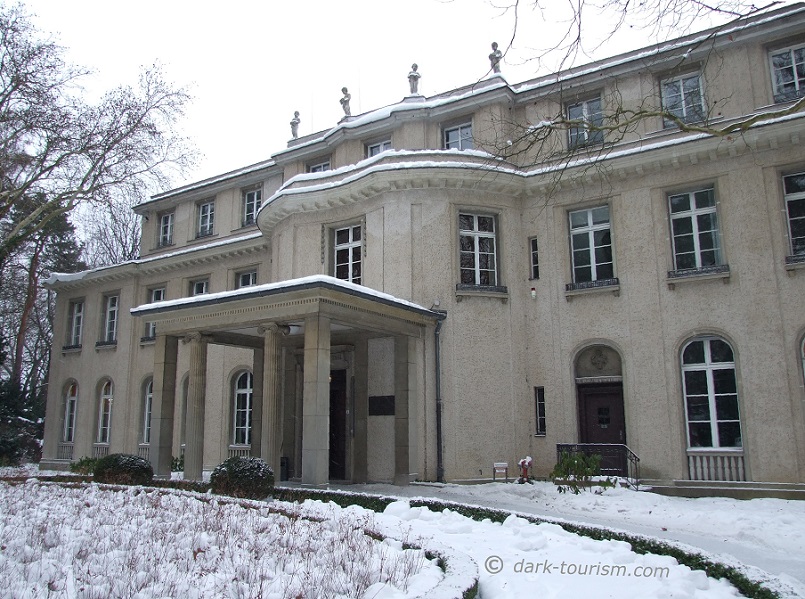20 January is a very momentous day in dark history – and no, I’m not referring to what will and what might happen in the USA today. I’m referring to the day, 79 years ago today, on 20 January 1942, when the Wannsee Conference took place at this stately villa on the shores of the Wannsee lake on the south-western edge of Berlin.
The event was called for top-level Nazis to discuss how best to implement the “Final Solution of the Jewish Question”. It wasn’t decided here, as you can often erroneously read – that decision had already been taken even higher up (Hitler, Himmler, and in this case especially Hermann Göring), at this conference it was more the higher bureaucrats putting the orders from above into reality. And the order hidden behind that cynical euphemism “Final Solution” obviously meant the systematic deportation and industrial mass murder of all European Jews within the Nazi-occupied lands. At the conference it was decided to apply the method already used in the “T4” euthanasia programme and at Chełmno, namely gassing.
The conference was chaired by Reinhard Heydrich, chief of the Reich Security Head Office of the SS – who less than six months later was assassinated in Operation Anthropoid by Czech resistance fighters. The recording secretary who took the minutes at the Wannsee Conference was Adolf Eichmann, who has hence become the most classic example of what in German is known as a “Schreibtischtäter” (literally ‘desk perpetrator’, meaning somebody who doesn’t get his own hands bloody, but sees to crimes by administrative means).
The practical implementation of the “Final Solution” was then code-named “Operation Reinhard”, after Heydrich, and in particular involved the construction of three special death camps, Bełżec, Sobibór and Treblinka, in whose gas chambers over a third of all Jews murdered in the Holocaust were systematically killed over the course of barely a year. This was in addition to the already operational camps at Auschwitz, Majdanek, Chełmno and Maly Trostinec. At Auschwitz the systematic extermination continued until early 1945 …

The photo at the top, repeated here, shows the original building of the Wannsee Conference, which now houses a memorial exhibition about the events and their context. It’s an unusual dark site, where the pretty setting contrasts harshly, if rather abstractly, with the sinister graveness of its history. A one-of-a-kind must-see dark-tourism site.
[Those who used to follow my former DT page on Facebook before it was purged by the company last April may notice that this post was adapted from my equivalent post there last year, and from another one originally posted in 2016.]



